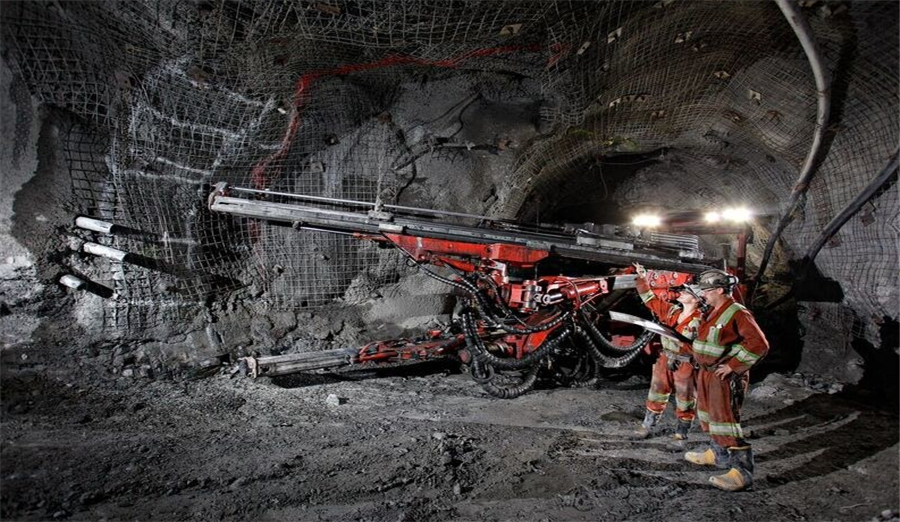
CHAPLEAU, Ontario/LONDON, June 21 (Reuters) – Hundreds of feet below thick boreal forest blanketing the Canadian Shield, a squad of near-silent, battery-powered machines are tunneling toward gold in a multimillion-dollar mining experiment to ditch diesel.
Goldcorp Inc is building the world’s first new all-electric mine, a high-stakes gambit to replace noisy, fume-belching equipment being closely watched by a diesel-dependent industry.
A rough-hewn tunnel, some 800 feet underground, seems an incongruous setting for revolutionary technology, but front-line workers call it a game changer.
“It would be a challenge to go back,” said jumbo drill operator Adam Ladouceur, noting the air quality and lack of noise at the Borden project, northwest of Toronto, is “amazing” compared to the 23 mines where he previously worked.
Mining needs a revolution to avoid retention or employment issues.
Stung by a multi-year slump in commodity prices that began recovering in 2016, miners remain desperate to keep operating costs down. Going electric could slash energy expenses, while reducing greenhouse gas emissions.
Borden will save about $9 million annually on diesel, propane and electricity. Productivity gains are also possible, from equipment that can keep working while gas from dynamite blasting clears, for example.
Electric equipment should help keep mine workers healthier. Studies show an elevated cancer risk for underground miners exposed to diesel exhaust, classified as carcinogenic by the World Health Organization.
Health issues are “a big problem” and particularly acute in long-running underground mines with older equipment, said IndustriALL Global Union director Brian Kohler.
Beyond Borden’s battery-powered scoops and vehicles, underground workers will wear tags linked to a ventilation-on-demand system, moving air only where needed.
Going electric carries a 25-30 percent premium on equipment, but could halve the cost of energy-hungry ventilation, which “is like trying to have air conditioning in an enormous old house with leaks,” said Goldcorp vice-president John Mullally.
When commercial production on the 100,000-ounce-per-year mine starts in the second half of 2019, further savings could come from lower maintenance costs, said project manager Luc Joncas, noting diesel machines typically have 1,000 more parts than electric.
Borden is set up so that it could someday be remotely controlled, joining a handful of automated mines around the world.
Automation is taking off in mining, but electrification is lagging, said Patrick Murphy, a president at Sandvik AB , supplying electric mining equipment to Borden.
That is because old mines can be retrofit to add automated elements, like robots, quite efficiently, while full payback from all-electric operations requires customization of new-builds.
Still, it has not been easy planning around Borden’s challenges, including a long, steep road that will extend 4 kilometers (2.5 mile) into the mine.
To help power its 40-ton electric trucks, which cannot run a full shift hauling ore out of the mine without recharging, Sandvik is developing a fast-charge system, expected in 2020.
Goldcorp still needs to truck material to its processing plant, two hours away, and is studying alternatives to diesel vehicles.
Today, a trickle of fully electric mines are planned.
Diesel still makes economic sense at big open pit operations, where there is no ventilation savings and vehicles need big batteries that eat into haulage space.
As the world’s near-surface mines are depleted, production is moving deeper underground, where high temperatures and ventilation costs make diesel impractical.
Early this year, global miners Glencore and Vale approved projects more than 5,000 feet below ground in Sudbury’s nickel belt. Nouveau Monde Graphite aims to build the first all-electric surface mine in Quebec.
Mining companies may find that going electric appeals to the millennials needed to replace an aging workforce, said Michel Serres, a vice president at mine supplier ABB Ltd.
“Mining needs a revolution to avoid retention or employment issues,” said Serres. “Working with stone-age technologies is not sexy for technicians or engineers coming out of school.”
(By Susan Taylor and Barbara Lewis; Editing by David Gregorio)